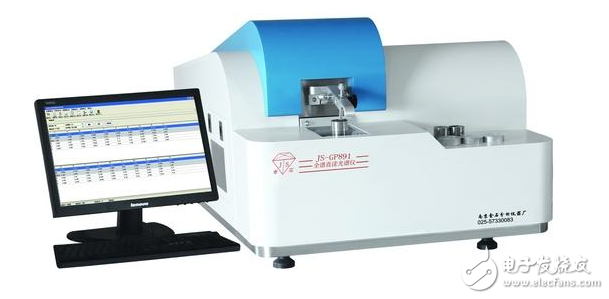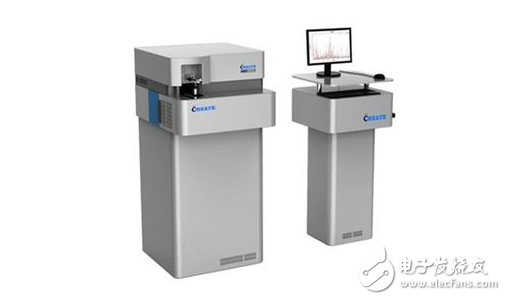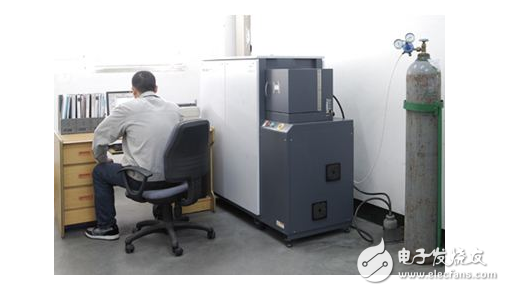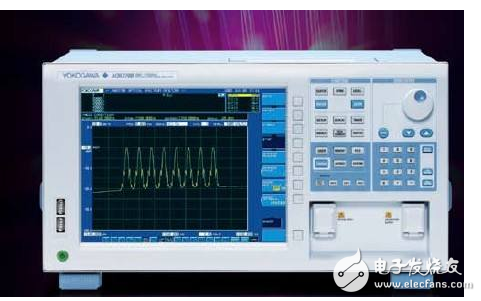According to the working principle of modern spectroscopy instruments, spectrometers can be divided into two categories: classic spectrometers and new spectrometers.
Classical spectroscopic instruments are instruments based on the principle of spatial dispersion: new spectroscopic instruments are instruments built on the principle of modulation.
Classical spectroscopy instruments are slit spectroscopy instruments. The modulation spectrometer is non-spatial spectroscopic, which uses circular aperture to enter the light according to the principle of splitting of the dispersive component. Spectroscopic instruments can be divided into: prism spectrometer, diffraction grating spectrometer and interference spectrometer.
OpTIcal MulTI-channel Analyzer is a new type of spectrum analysis instrument that has been used in photopic detectors (CCD) and computer control for more than a decade. It integrates information acquisition, processing and storage functions.
Since OMA no longer uses photographic emulsions, avoiding and eliminating the darkroom processing and subsequent cumbersome processing, the measurement work has fundamentally changed the traditional spectroscopy technology, greatly improving the working conditions and improving the work efficiency: using OMA Analytical spectroscopy, accurate and rapid measurement of the basin, high sensitivity, fast response time, high spectral resolution, measurement results can be immediately read from the display or output by the printer, plotter.

It has been widely used in almost all spectral measurement, analysis and research work, especially for the detection of weak signals and transient signals.
How the spectrum analyzer works:The analysis principle of the spectrum analyzer is to absorb the characteristic spectrum of the element to be tested radiated by the light source through the ground state atoms of the element to be tested in the vapor of the sample, and the extent of the emission spectrum is weakened, thereby obtaining the content of the element to be tested in the sample. It conforms to Langper-Beer's law A= -lg I/I o= -LgT = KCL where I is the transmitted light intensity, I0 is the emitted light intensity, T is the transmittance, and L is the light passing through the atomizer optical path due to L is a constant value so A = KC.
The role of the spectrum analyzer:Infrared spectrometers can be used to study the structure and chemical bonds of molecules, as well as methods for characterizing and identifying chemical species. Infrared spectroscopy is highly characteristic and can be analytically identified by comparison with the infrared spectrum of standard compounds. The characteristic wave number of the chemical bond is used to identify the type of the compound and can be used for quantitative determination. It can be used for the identification research of different kinds of polymer materials.
Classification of spectrum analyzers:According to the working principle of modern spectroscopy instruments, spectrometers can be divided into two categories: classic spectrometers and new spectrometers. The classical spectroscopy instrument is an instrument based on the principle of spatial dispersion; the new spectroscopy instrument is an instrument based on the modulation principle, and the classical spectroscopy instrument is a slit spectroscopy instrument. The modulation spectrometer is non-spatial spectroscopic, which uses circular aperture to enter the light according to the principle of splitting of the dispersive component. Spectroscopic instruments can be divided into: prism spectrometer, diffraction grating spectrometer and interference spectrometer.
How to use the spectrum analyzer:The operation of different models is different for different companies. Portable and easy to use, basically come out after a photo. Large-scale spectrometers for scientific research have special after-sales guidance and are also complicated to use. Basically, the light source emits light, shines on the sample, or reflects or transmits it after receiving the same software analysis. There are mainly three kinds of spectrometers of infrared, Raman and fluorescence, and the operation of each type is also different.
Infrared spectrum analyzer use method1. Turn on the power to the main unit.
2. Turn on the computer and double-click the FT-IR software.
3. Go online and after the connection is successful, click OK to launch.
4. Click 1) SETUP in the order indicated in the figure above, and click OK to exit.
2) BACKGROUND, click OK, the system scans the background for the specified number of times. Insert the sample into the sample holder.
3) SCAN, the system scans the sample a specified number of times.
5. Spectral processing
1) After the scan is completed, the spectrum name can be modified.
2) If you need to print, click FILE - PRINT.
6. After the sample test is completed, first exit the FT-IR software, turn off the computer, and finally turn off the power to the host.
7. Notes on the use of the instrument:
A Keep the indoor environment relative humidity below 50%. KBr windows and beam splitters are easy to absorb moisture. To prevent deliquescence, be sure to keep the room dry. At the same time, the number of people operating should not be too much, in case the water vapor and CO2 exhaled by people affect the work of the instrument.
B Maintain a relatively stable indoor temperature. The temperature difference changes too much, and it is easy to cause moisture to condense on the window.
C It is recommended to periodically purge the instrument with N2 if conditions permit.
D Try not to move the instrument to prevent severe vibration of the precision instrument.

1. Turn on the computer and Raman instrument and warm up for about 1 hour;
2. Open the program operation interface on the computer desktop, the password is “OPUSâ€;
3. Click the sample icon to adjust the type of the test sample and adjust it in the basic settings.
Section laser intensity; change the name in the advanced settings and change the save path and set the number of scans and time, choose the resolution according to the sample type;
4, loading; (note that it can not contaminate the lens)
5, sample detection: select the Raman spectrum, after the preview spectrum appears, before and after
Adjust the sample holder position (click Forward and backward) to the peak display maximum amplitude;
6, back to the basic settings, click on the sample test to start testing the sample; Second, the spectrum processing
1, spectrum processing: click on the zoom icon to enlarge the spectrum, baseline correction, peak
Bit, click Print - New Print Template, drag the first spectrum icon in the left display bar into the template, then drag the second peak icon into the template, create a new table in the template blank, and drag the peak icon into In the table, cut out the excess part of the template including the Bruker logo (right click on the blank to display the properties - range - display the Bruker logo);
2, save the spectrum: right click - copy, select the last item; open the WordPad,
Stick and save the tablet;
3, save the data: select the left display bar icon, right-click - display parameters - Raman,
Copy the data and paste it on the tablet.

Run tcm4400 after booting up in the following order: 20kv/10ma→30kv/10ma→40kv/10ma→50kv/10ma→60kv/10ma→24kv/100ma→40kv/60ma→50kv/48ma →60kv/40ma If the downtime is greater than 24 The hour is less than 100 hours and the dwell time per step is 1 minute. If the downtime is greater than 100 hours, the dwell time per step is 5 minutes. Automatic aging After running tcm4400, if the downtime is greater than 24 hours and less than 100 hours, select “fast†aging. If the downtime is greater than 100 hours, select “normal†aging.
Gas bottle replacement
In order to prevent impurities in the cylinder from entering the analyzer, it is recommended to replace the fresh gas when the bottle pressure is 10 air pressure.
1. Set the high pressure to 20kv/10ma, then turn off the high voltage.
2. Set the separation chamber medium to air.
3. Run tcm4400 and enter detector gas support. Press f2=change gas bottle.
4. Close the main valve of the cylinder and remove the pressure reducing valve.
5. Replace the new p10 gas bottle.
6. Quickly open the cylinder main valve and close it quickly to flush the interface.
7. Install the pressure reducing valve and open the main valve to check that the secondary pressure is 0.7-0.8 bar. (usually 0.75bar)
8. Start the p10 gas with the command f1=start detector gas and set the dichroic chamber medium to vacuum.
9, open high pressure, normal analysis.
10. Check phd and enter detector check. When checking phd, please note: 1) 2) 3) 4) 5) psc is set to no. Set different crystals, angles, detectors, and load samples (c3 or cu) according to requirements. . Adjust kv, ma, collimator, mask, etc. so that current(kcps): 20kcps or so. Press the f1 key to start the measurement and observe whether the top poisiTIon is 50±2. If not, adjust the detector hv to 50 ± 2. General setting: lif200+fl: with cu kβ line, angle 40.45, sample cu. Ge+fl: Use pkα line, angle 140.96, sample c3. Pet+fl, al kα, 145.00, c3 sample. Px1+fl, cu lα, angle calculated from 2d value, (λ = 13.336) cu sample. Lif220+fl, cukαβ, 58.53, cu sample. Collimator: Collimator. Xtal: crystal. Angle: angle. Detector: detector. Detector hv: detector high voltage. Top posiTIon: Peak position. Tube kv ma: High pressure setting. In general, xtal:1:lif200, 2:ge, 3:pet,4:px1, 8:lif220. collimator: 1:300, 2:150, 3:700. detector: 1:fl (flow detector) 3: sc (blinking detector). Loading and unloading samples: Press the f9 (genaral) key, then the f1 (load/unload) key. 6) 7) 8) The sc detector can usually be inspected once a year or two. It can only be used in conjunction with lif200 and lif220. Set the conditions as above and set the detector to No. 3.

Aegis Series Vape is so convenient, portable, and small volume, you just need to take them out of your pocket and take a puff, feel the cloud
of smoke, and the fragrance of fruit surrounding you. It's so great.
We are the distributor of the GEEKVAPE brand, we sell GEEKVAPE Aegis Series Vape, GEEKVAPE Sonder U Vape, GEEKVAPE Z Series Vape, and so on.
We are also China's leading manufacturer and supplier of Disposable Vapes puff bars, disposable vape kit, e-cigarette, vape pens, and e-cigarette kit,
and we specialize in disposable vapes, e-cigarette vape pens, e-cigarette kits, etc.
geekvape aegis vape,geekvape aegis vape pod starter kit,geekvape aegis vape mod,geekvape aegis max vape kit,geekvape aegis vape device
Ningbo Autrends International Trade Co.,Ltd. , https://www.vapee-cigarettes.com